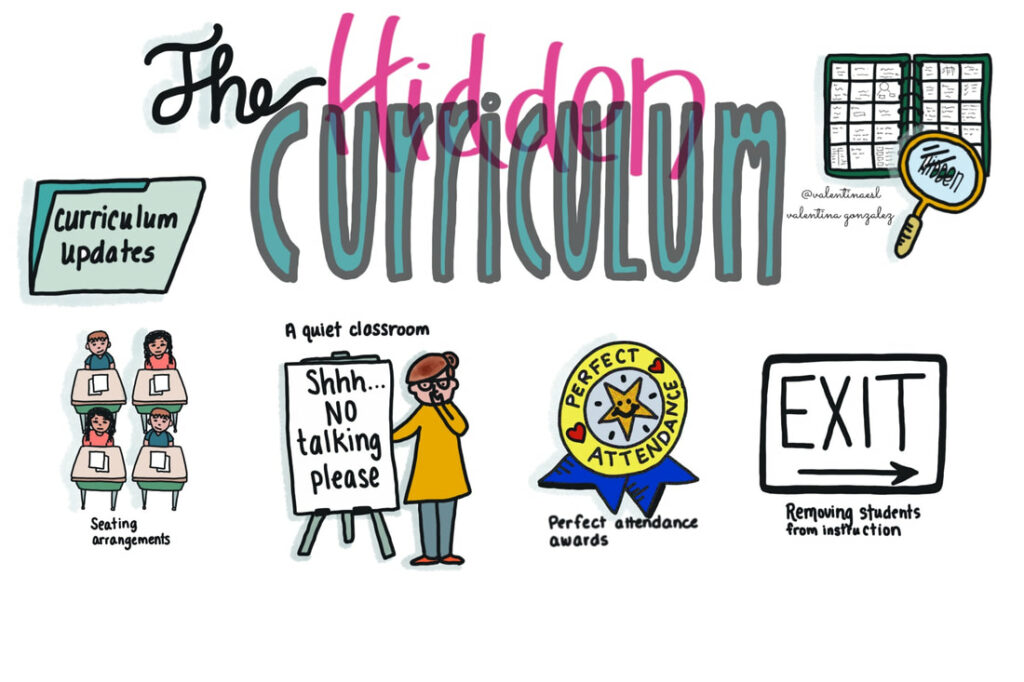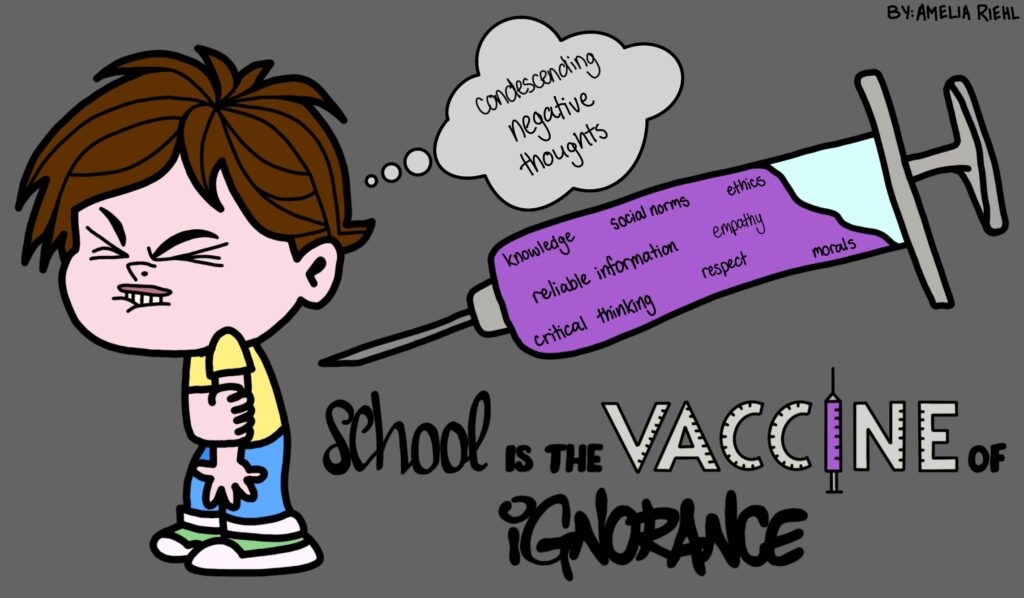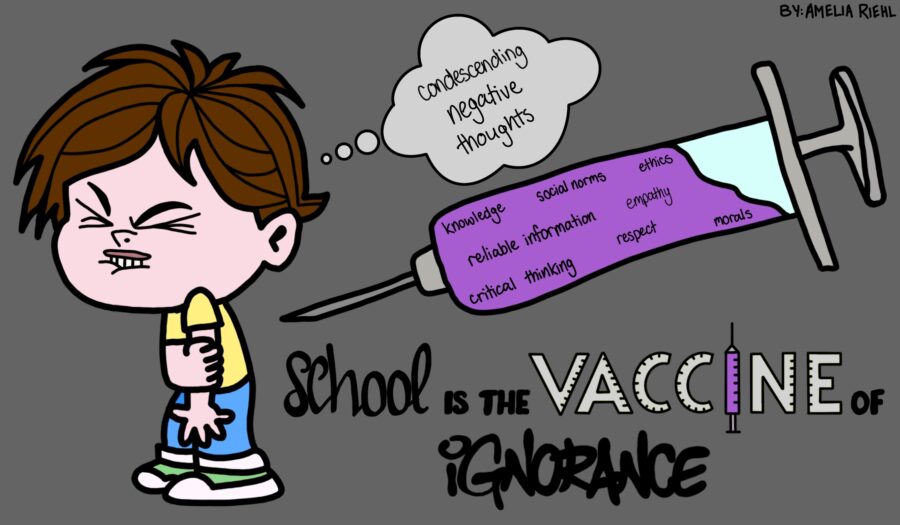Hi there everyone! Welcome to my last learning portfolio blog post of the year! For this module, we discussed educational metaphors, and I wanted to share my favourite one and my visual representation of it with you all.
Schooling is a vaccine for ignorance.
Unknown
One of humanity’s most significant challenges is ignorance—the lack of reliable information about and knowledge of our natural world (Trevors and Saier, 2011). Especially over the last few years, during the COVID-19 pandemic, the ignorance of people has become more prominent and noticeable. Ignorance is when one lacks knowledge or education and does not have a complete set of skills to think critically, be mindful of others’ beliefs, values, and emotions, or respect others for their differences.
Essentially, this metaphor suggests that the cure for ignorance is education. In other words, to avoid ignorance, one must be educated and have prior experience and knowledge to think critically, be mindful of others, and respect others for their differences. Attending school and being educated is proven to help people develop social awareness (Trevors and Saier, 2011). In education settings, we have been taught the educational curriculum, such as English and math, but also the hidden curriculum. The hidden curriculum is what we are indirectly taught in school—we do not notice we are being taught this curriculum. The hidden curriculum is unwritten rules of the world, unspoken expectations, unofficial norms, desired behaviours, values, and social and cultural messages.

In many societies, education is used to decrease violence and discrimination in a society (Drew, 2022). For example, in some cultures, children are sent to school in order to deter them from joining gangs or committing crimes. Essentially, school is offered as an ‘alternative’ to criminal life. Further, here in Canada, we are taught about various ethnic and cultural groups. Being taught about various ethnic and cultural groups and their beliefs and values teaches students to be respectful of others and that one person matters just as much as the next.
When people attend school and receive a quality, unbiased education, they learn about values, ethics and compassion. This hidden curriculum influences students to be critical thinkers, good decision-makers, and empathetic toward others.
To illustrate this metaphor, I have created this visualization that shows someone about to get picked by a needle full of the hidden curriculum that is taught in schools.

Despite this metaphor seeming quite powerful and simple, it is extremely flawed. Students can learn ignorance, just as they can learn how not to be ignorant. School is just one part of a student’s life; there is also home life. At home, parents might teach their children different values, behaviours, and social and cultural messages that conflict with what’s being taught in school. Also, peers have a huge impact on the development of beliefs. Some students may learn something at home, which they will then bring to school and share with their other peers. Thus, many develop beliefs that are very harmful and hurtful to others. Schooling and receiving an education is just one small part of the cure for ignorance alongside home life and peer influence.
Reflecting on this metaphor, I believe it is important that we always consider and keep in mind the hidden curriculum we might be teaching in schools or that we might be learning in school. Further, teaching curriculum, such as why it is not acceptable to be racist, is essential. In order for students to get the most out of their education, teachers need to be willing to tackle big issues, such as racism and discrimination. Thus, I believe the metaphor that school is the vaccine for ignorance Should be considered when administrators are developing policies and when school boards and education ministers are revising curriculum. It is essential that students are offered the chance to learn more than just English and science. Students should have the chance to be able to learn how the world works.
I chose this learning portfolio activity prompt because I thought the idea of making a visualization was very interesting. I love having the chance to be creative and interpret the various meanings of metaphors. Further, visualizations can be very impactful, and I can use this visualization in other parts of my life as well in order to make an impact on society and education.
Thank you for reading! I hope that you enjoyed it.
Amelia 🙂
References
Trevors, J. T., & Saier, M. H., Jr (2011). A Vaccine Against Ignorance?. Water, air, and soil pollution, 220(1-4), 1–3. https://doi.org/10.1007/s11270-011-0773-1
Drew, C., (2022). 23 Metaphors About School and Education. Helpful Professor. https://helpfulprofessor.com/metaphors-about-school-education/

